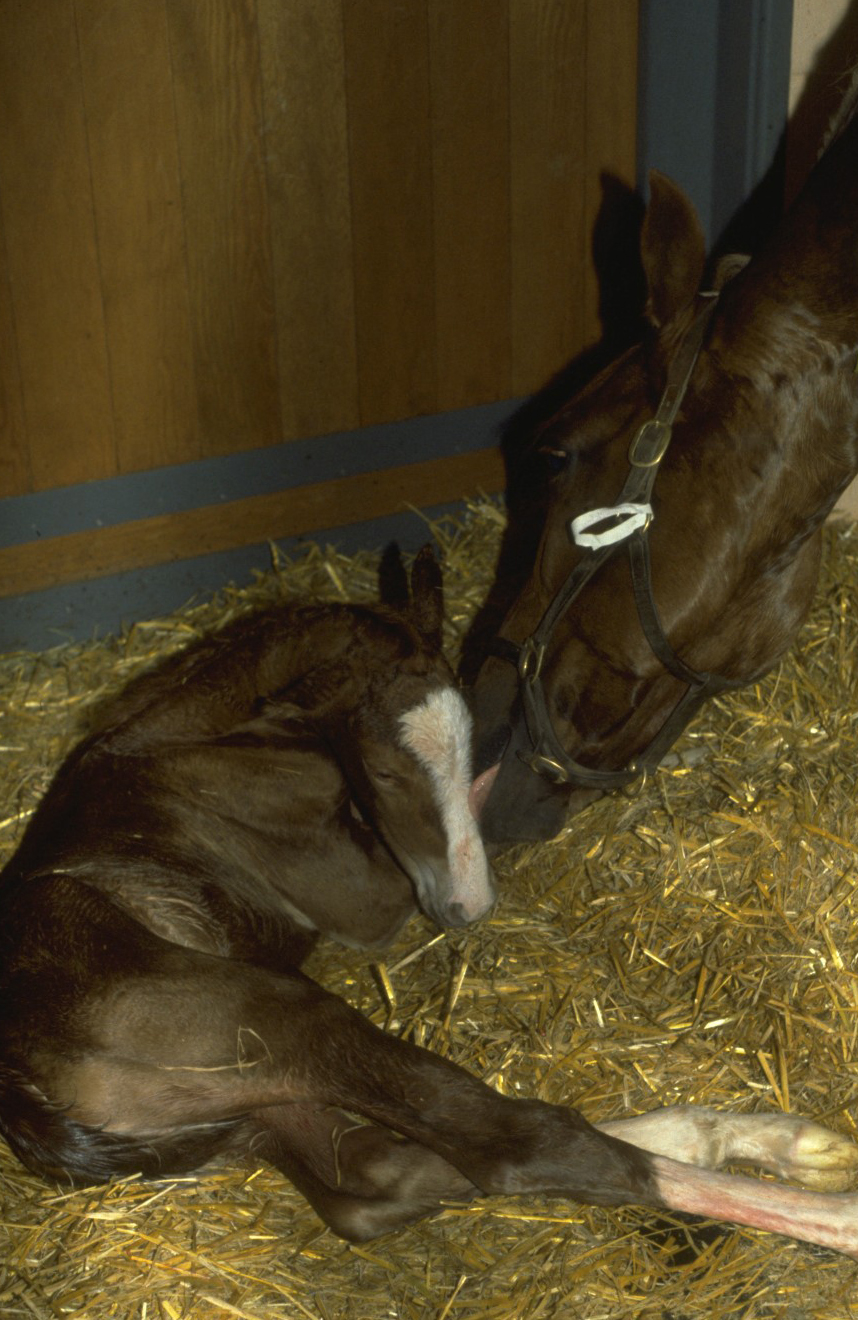Equine Veterinary Journal Early View March 2015
By Heather Ferguson
Mare and foal survival and subsequent fertility of mares treated for uterine torsion
Spoormakers T.J.P., Graat E.A.M., ter Braake F., Stout T.A.E. and Bergman H.J.
http://onlinelibrary.wiley.com/doi/10.1111/evj.12418/abstract
The aim of this retrospective study was to further define survival rates for mares and foals following uterine torsion, and to evaluate the success of correction of uterine torsion by standing flank laparotomy compared with other methods. The clinical records of 189 mares presented to 3 referral centres in the Netherlands were analysed. 77.5% of torsions occurred at 320 days. The most common degree of torsion was 180-360⁰ (66.9% of mares). The more severe torsions >360⁰ were more common in later stages of gestation. Mare age, breed and parity were not found to affect the incidence of uterine torsion.
Overall rates of survival to discharge for mares and foals were higher than in previous studies, at 90.5% and 82.3% respectively. Of the cases that were discharged, all survived to foaling. Correction by standing flank laparotomy under standing sedation and local anaesthesia was the preferred method in these clinics and was used in 169 of the affected mares. A small number of difficult cases were treated by ventral midline laparotomy or flank laparotomy under general anaesthesia. Two mares were subjected to euthanasia without correction and in one mare, uterine torsion spontaneously resolved. Mare and foal survival were both significantly higher in cases treated by standing flank laparotomy (92.5%, 88%) than other methods (65%, 35%). Stage of gestation had a significant effect on mare and foal survival, with higher survival rates of 95.7% and 90.6% respectively at 320 days. In these later stages of gestation, standing flank laparotomy did not significantly alter survival rates compared to other methods. The degree of rotation of the uterine torsion was also important, with mare and foal survival rates of 97.8% and 90% when rotation was <360⁰, significantly higher than 77.1% and 73.5% when rotation was greater. Direction of the rotation (clockwise or anti-clockwise) was not found to be a factor.
One hundred and twenty-three mares from the study group were later rebred, 93.5% of them successfully. This was not affected by correction method or stage of gestation at which uterine torsion occurred.
Bottom line:
When uterine torsion occurs at 360⁰ are associated with lower survival rates. Uterine torsion had no deleterious effect on subsequent fertility.
--Ends--


